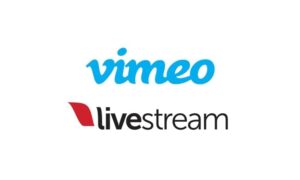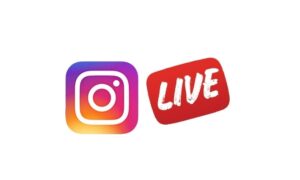Whether you’re streaming music festivals, conventions, sporting events, or other types of events, streams have become a popular add-on at events in recent years. Why? For starters, live streaming apps eliminate FOMO (fear of missing out) among attendees who couldn’t attend your event by giving them the option to attend your event virtually from anywhere in the world. But even more importantly, in the age of Covid they have become integral to running hybrid events. In combination with robust health screening, these services will be a core element of the return to live events, while letting you connect with fans and engage audiences that you couldn’t reach otherwise.
Thanks to constantly-improving technology and mobile phones, event professionals now have a range of apps to choose from if they want to capture the uniqueness of their event and share it with the world.
But what are the best live streaming apps planners should be considering? What should they weigh in their considerations?
In this guide, we’ve outlined the top 11 live streaming solutions for events in 2020, plus their pros and cons so you can choose the best app for your event.
Before we dive in, some housekeeping:
What is Live Streaming?
Live streaming is a form of online video streaming that records and broadcasts media to an online audience in real-time. Video live streaming, which is also typically referred to as streaming, differs from pre-recorded videos since it cannot be cut, edited, and censored.
Why Live Stream your event?
With 66 percent of event professionals reporting videos as the main part of their marketing strategy, live streaming events provide planners with a unique opportunity to reach a wider audience (like remote attendees), boost attendee engagement, enhance their social media accounts, and cut marketing costs.
3 Tips for Live Streaming Your Event
- Get to know your live streaming equipment. No matter what you decide to use for the big day, be sure your team runs a few tests. It turns out that most solutions have several different ways to enhance your content. If you’re opting for something lightweight, are there implication for battery life and stream quality? Will your network be able to support the data upload needed for your stream? These are all important things to keep in mind, so run a test to determine what kind of equipment setup you’ll need well in advance.
- Before you stream your event, determine “why” you are doing it in the first place. What do you hope your audience will get out of the stream? Like with all technology, you shouldn’t just incorporate technology into your events simply because it’s trendy. Figure out how a live stream actually fits into the overall strategy of your event, and only then deploy it.
- Test and retest your stream. Broadcasting your event to a live digital audience gets a lot less scary when you’re comfortable with the technology and have run many pre-tests. Equipment is one thing, but on the other hand you should also consider the digital experience anyone watching will have. During your tests, play around with the video layout (e.g. landscape or portrait) and test the video and audio quality. Understand what kind of fan interactions your streaming app offers. You’ll want to take every opportunity available to engage with your online audience.
Top 11 Best Live Streaming Apps for Events

1. Facebook Live
Facebook Live allows users to simply log in to their Facebook account and live stream to their direct audience. While watching the live stream, audience members will be able to directly engage with the live stream video by adding their reactions or comments.
Pros of Facebook Live:
- Facebook Live streams to your audience that you have already established. You can even stream to a particular event page.
- Audience members can react and comment on the live stream.
- The video is automatically saved to the user’s page.
- Facebook Live is mobile friendly and gives mobile viewers a great experience.
Cons of Facebook Live:
- If you use external software to manage your live stream, you have to always log in to your Facebook page first to launch the live stream.
- Since audience members are watching the live stream through Facebook and not a strictly-livestreaming outlet, they could become distracted and leave your live stream.

2. Vimeo Livestream
Designed specifically for the workforce and events, Vimeo Livestream offers event planners the hardware and the software tools needed to professionally live stream their event. Using the Vimeo camera you can live stream your event and it will simultaneously stream to your social media accounts or your event website.
Pros of Vimeo Livestream:
- Vimeo Livestream offers high-quality video streaming.
- When your event ends, the live stream video will be stored on the camera.
Cons of Vimeo Livestream:
- Vimeo Livestream is not free. There are three plans event professionals can choose from.

3. Instagram Live
A much newer live-streaming app than Facebook and YouTube Live, Instagram Live allows users to live stream within their Instagram story to their followers.
Pros of Instagram Live:
- Instagram Live is very simple, easy to use, and does not require professional equipment or another application.
- You can engage with followers in realtime by responding to their comments or likes.
- You can track engagement and viewer metrics in Instagram Analytics after your video has ended.
Cons of Instagram Live:
- No event planning features.
- No integrations with other broadcasting applications or tools.

4. Periscope
If you’re looking to expand your audience and share your event with the world, then Periscope is the live streaming application for you. Periscope, which was the first live streaming event app, allows planners to live stream their event and allows viewers to like and comment on the videos.
Pros of Periscope
- The interface is easy-to-use and is good for spur-of-the-moment live streams.
- Periscope connects with your Twitter account.
- There is no maximum video length of the live stream.
- Periscope is mobile-friendly for Android and iOS devices.
Cons of Periscope
- Video replay is only available for 24 hours and then deleted.
- Audience members must log into a Periscope account in order to view the live stream video.
- Planners cannot monetize the live stream with ads.

5. YouTube Live
One of the first platforms to add a live streaming feature, YouTube Live is regarded as one of the most sophisticated and event friendly live streaming apps on the market.
Pros of YouTube Live:
- Having your live stream listed on YouTube gives your video immense search potential since YouTube’s platform has no rivals.
- Offers an array of features (e.g.: YouTube Stream Now versus YouTube Events) for different user types.
- YouTube Live has event-specific features like live chatting, automatic recording, and broadcast delay.
Cons of YouTube Live:
- YouTube Live does not offer any advanced event features like guest list management.
- In order to live stream, you have to wait 24 hours for YouTube’s approval.

6. Dacast
Dacast is an all-in-one live streaming solution that is specifically designed for the business-to-business industry. Some of the platform’s most highlighted features include its fully customizable white label ability and video hosting options.
Pros of Dacast:
- Very high-quality live streaming.
- Video hosting options with pay per view features, a big plus for people working in the event industry.
- Dacast offers clients 24-hour support 7 days a week.
Cons of Dacast:
- Dacast charges per bandwidth, making calculating live streaming prices for events a little complex and confusing.
- Although some people report liking the basic user experience because it is easy to use, a more sophisticated offering for users could be beneficial.

7. YouNow
If you’re hosting a music festival and are considering live streaming your event, then YouNow is a must. YouNow is a live streaming social network of musicians, like DJs, artists, and content creators.
Pros of YouNow:
- YouNow lets users live stream, join communities, and chat with others.
Cons of YouNow:
- The audience is mostly musicians and other younger music creatives. So if you’re looking to live stream to a wider audience then this, YouNow may not be the best live streaming option.

8. JW Live
Part of the JWPlayer platform, JW Live allows users to stream their event from any device while utilizing the tools of the JW Player stack.
Pros of JW Live:
- JW Live offers a user-friendly dashboard that lets you quickly begin your live stream.
- The platform features high-definition video quality with adaptive HLS so users have a consistent streaming experience.
- Simulcast your live stream to YouTube, Facebook, and any other RTMP platform.
- Get real-time analytics, like the total number of views, their geography, the devices they are watching your stream on, and more.
Cons of JW Live:
- Users have to purchase the premium plan to live stream.
- To use JW Live, you have to use encoding software like Open Broadcaster Software.

9. Broadcast Me
If you’re looking for a free, portable live streaming option, then Broadcast Me is for you. This live streaming app allows users to live stream from anywhere using only their Apple or Android phones or tablets.
Pros of Broadcast Me:
- Ideal for on-the-fly live streaming.
- Easy to use.
- Can stream simply from your phone or tablet.
- You can integrate your live stream with almost every social media network.
Cons of Broadcast Me:
- Although Broadcast Me offers free options, the unlimited streaming services cost an upfront one-time fee of $5.99.

10. Zype
If you’re looking for a do-it-yourself, easy-to-use live stream video platform, then Zype is not the platform for you. Zype is an advanced, sophisticated streaming platform designed specifically for companies who want to invest in live streaming or videography.
Pros of Zype:
- Zype users can distribute their live stream video on several platforms like Apple TV, WordPress, Roku, and more.
- The platform offers video monetization features and opportunities.
Cons of Zype:
- The price of this platform is not listed on their website, but people have reported it is steep, but worth it for the platform’s sophisticated features.

11. IBM Cloud Video
Designed for corporate users and events, IBM Cloud Video is a live streaming platform that offers reliable streaming features and integrations, making it a safe option for corporate planners or users.
Pros of IBM Cloud Video:
- Your live stream is auto-archived and can be accessed after the live streaming is over.
- IBM Cloud Video offers users the ability to reach a large diverse audience through the CDNS (content delivery networks)
- Real-time analytics to track live streaming performance.
Cons of IBM Cloud Video:
- The platform only integrates with Facebook and Twitter.
- The software and user experience are very basic for the price tag.
- Enterprise plans only receive live event support.
Choosing the Best Live Streaming App Means Answering “Why”
Whether you want to live stream your event to reach a wider audience, boost attendee engagement, enhance your social media presence, or generate unique marketing collateral to use to promote future events, live streaming is a great way to achieve these goals. With these 11 live streaming apps, you can capture the uniqueness of your live event and share it with the world. Whichever live streaming app you choose, always remember to answer the “why” of your live stream and test your equipment before the big day.
Want to learn how you can optimize the other stages of your event for your event staff and attendees? Schedule a free demo with us, the leading global provider of technology for the world’s biggest events today.

